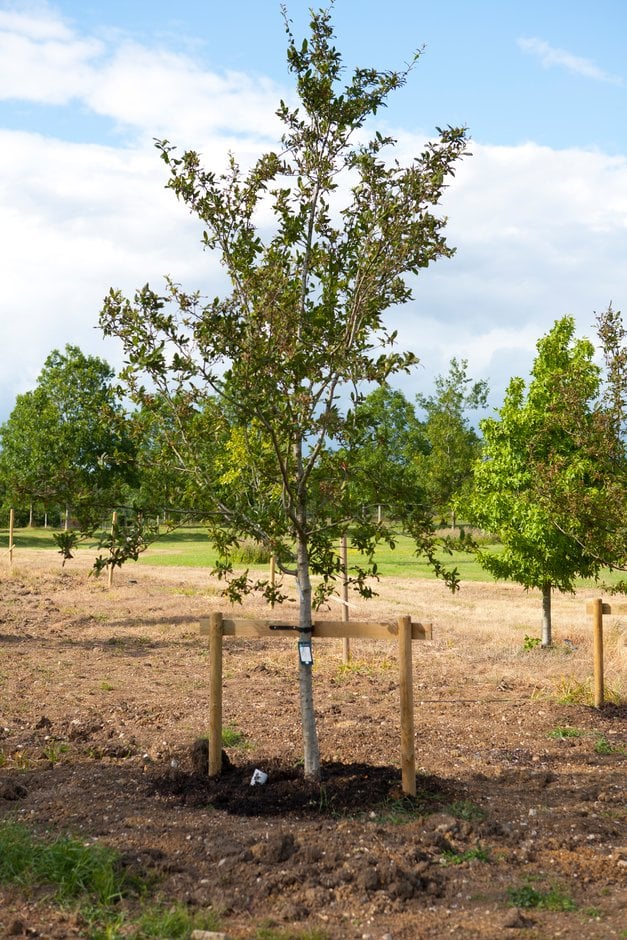Mespilus germanica (F)
common medlar
A spreading small tree or large shrub with oblong leaves turning yellow-brown in autumn, and white flowers 5cm in width in late spring, followed by brown fruit 5cm across.
Size
Ultimate height
4–8 metresTime to ultimate height
20–50 yearsUltimate spread
4–8 metresGrowing conditions
Moisture
Moist but well–drained, Well–drainedpH
Acid, Alkaline, NeutralColour & scent
| Stem | Flower | Foliage | Fruit | |
| Spring | White | Green | ||
|---|---|---|---|---|
| Summer | Green | |||
| Autumn | Brown Yellow | Brown | ||
| Winter |
Position
- Full sun
- Partial shade
Aspect
South–facing or North–facing or East–facing or West–facing
Exposure
Exposed or Sheltered Hardiness
H6Botanical details
- Family
- Rosaceae
- Native to GB / Ireland
- Yes
- Foliage
- Deciduous
- Habit
- Bushy
- Genus
Mespilus is a small spreading deciduous tree or large shrub with large leaves colouring well in autumn, and white flowers followed by edible fruits
- Name status
Correct
- Plant range
- Europe, Asia
How to grow
Cultivation
Grow in moderately fertile soil in full sun. Wait to collect fruit until after frost. For more details see medlar cultivation
Propagation
Propagate by seed sown in a seedbed in autumn or chip budding in late summer or by grafting
Suggested planting locations and garden types
- City and courtyard gardens
- Cottage and informal garden
- Wildlife gardens
- Edible fruit
Pruning
Pests
May be susceptible to aphids and caterpillars
Diseases
May be susceptible to honey fungus in gardens where it is present but insufficient data to determine degree of susceptibility. May also be susceptible to quince leaf blight, brown rot and powdery mildews
Get involved
The Royal Horticultural Society is the UK’s leading gardening charity. We aim to enrich everyone’s life through plants, and make the UK a greener and more beautiful place.
